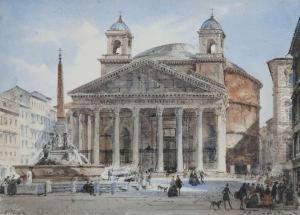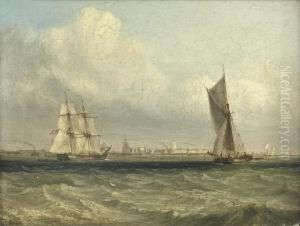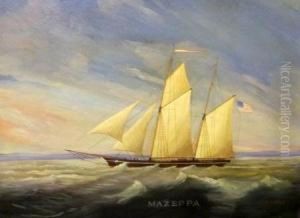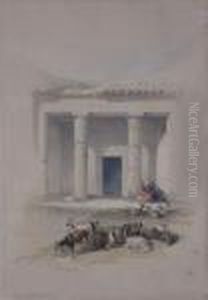D. Roberts Paintings
David Roberts was a distinguished Scottish painter, known for his prolific output of detailed lithograph prints of Egypt and the Near East as well as his architectural and landscape paintings. Born on October 24, 1796, in Stockbridge near Edinburgh, Roberts began his career as a house painter and decorator, but his passion for art led him to pursue a more formal education at the Trustees’ Academy in Edinburgh. He was apprenticed to a house painter, which provided him with a firm grounding in the practical aspects of painting, an experience that would later contribute to his mastery in depicting architectural subjects with precision.
Roberts first earned recognition as a theatre scene painter, collaborating with panorama painter Clarkson Stanfield. In 1822, he moved to London where he worked on dioramas, panoramas, and stage sets. In the following years, he became increasingly interested in landscape and architectural subjects, traveling extensively throughout Europe and the Near East to find inspiration for his work. His journeys took him to Spain, Morocco, Egypt, the Holy Land, and other parts of the Middle East, where he produced a large number of sketches that would form the basis of his later paintings and lithographs.
In 1838–39, Roberts undertook a prolonged tour of Egypt and the Holy Land, producing over a hundred detailed sketches of the monuments, landscapes, and people he encountered. These sketches served as the basis for a series of lithographs titled 'The Holy Land, Syria, Idumea, Arabia, Egypt & Nubia' published between 1842 and 1849 with text by Reverend George Croly. The lithographs were extremely well-received and contributed significantly to Roberts's fame. They also played a crucial role in shaping Western perceptions of the Middle East and were among the first detailed visual records of the region to be widely disseminated in Europe.
David Roberts was elected to the Royal Academy in 1841, an acknowledgment of his significant contribution to British art. His works were admired for their clarity, attention to detail, and the ability to capture the essence of the exotic locations he visited. Roberts's paintings and prints were highly sought after during his lifetime and continue to be celebrated for their historical value and artistic merit.
Roberts continued to travel and paint until the end of his life, although his later years saw a decline in the production of large-scale works. He died on November 25, 1864, in London, having left a legacy as one of the 19th century’s leading orientalist painters and as an important figure in Victorian art. His works can be found in major museums and collections around the world, and they remain a testament to his adventurous spirit and his meticulous approach to capturing the grandeur of ancient and exotic landscapes.



